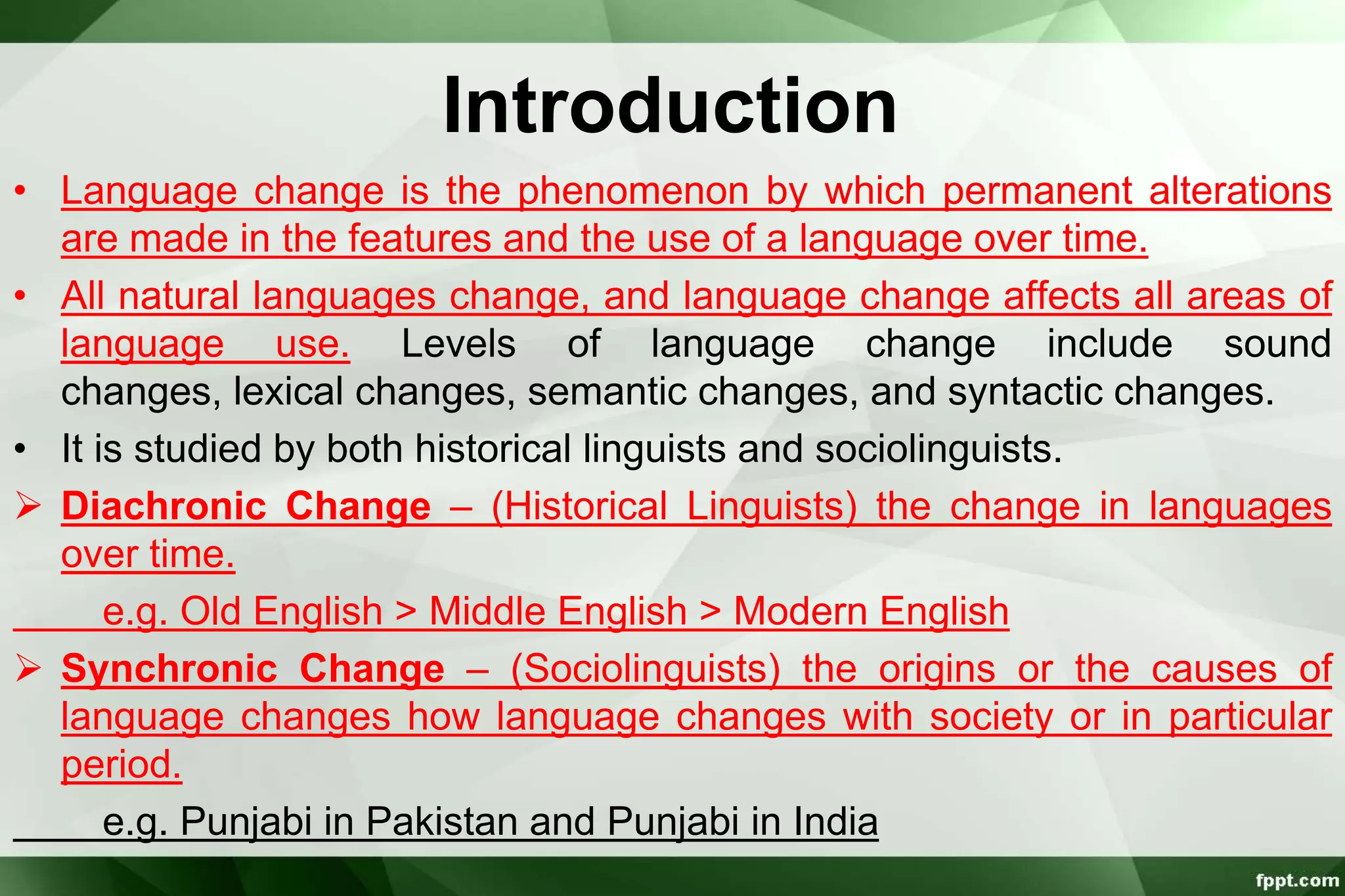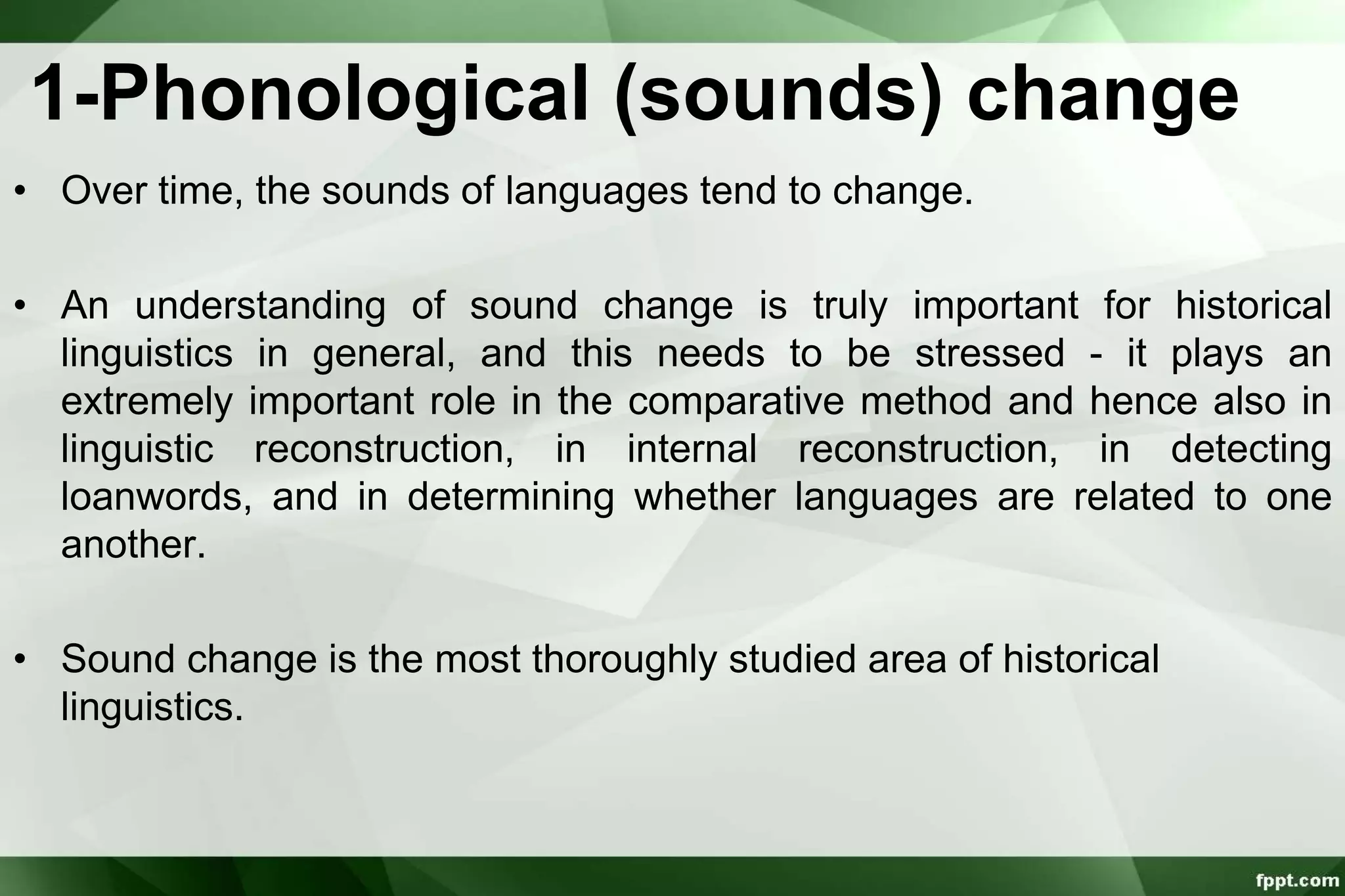This document provides an overview of language change from both a historical and sociological perspective. It discusses the different types and levels of language change, including sound changes, lexical changes, semantic changes, and syntactic changes. Several theories of language change are presented, such as functional theory, random fluctuation theory, substratum theory, and the S-curve theory. The document also examines the routes language change can take, such as through language learning, contact, social differentiation, and natural usage processes. Finally, it outlines the major levels of language change - phonological, syntactic, semantic, and lexical - providing examples of sound changes like assimilation, dissimilation, and the Great Vowel Shift.























